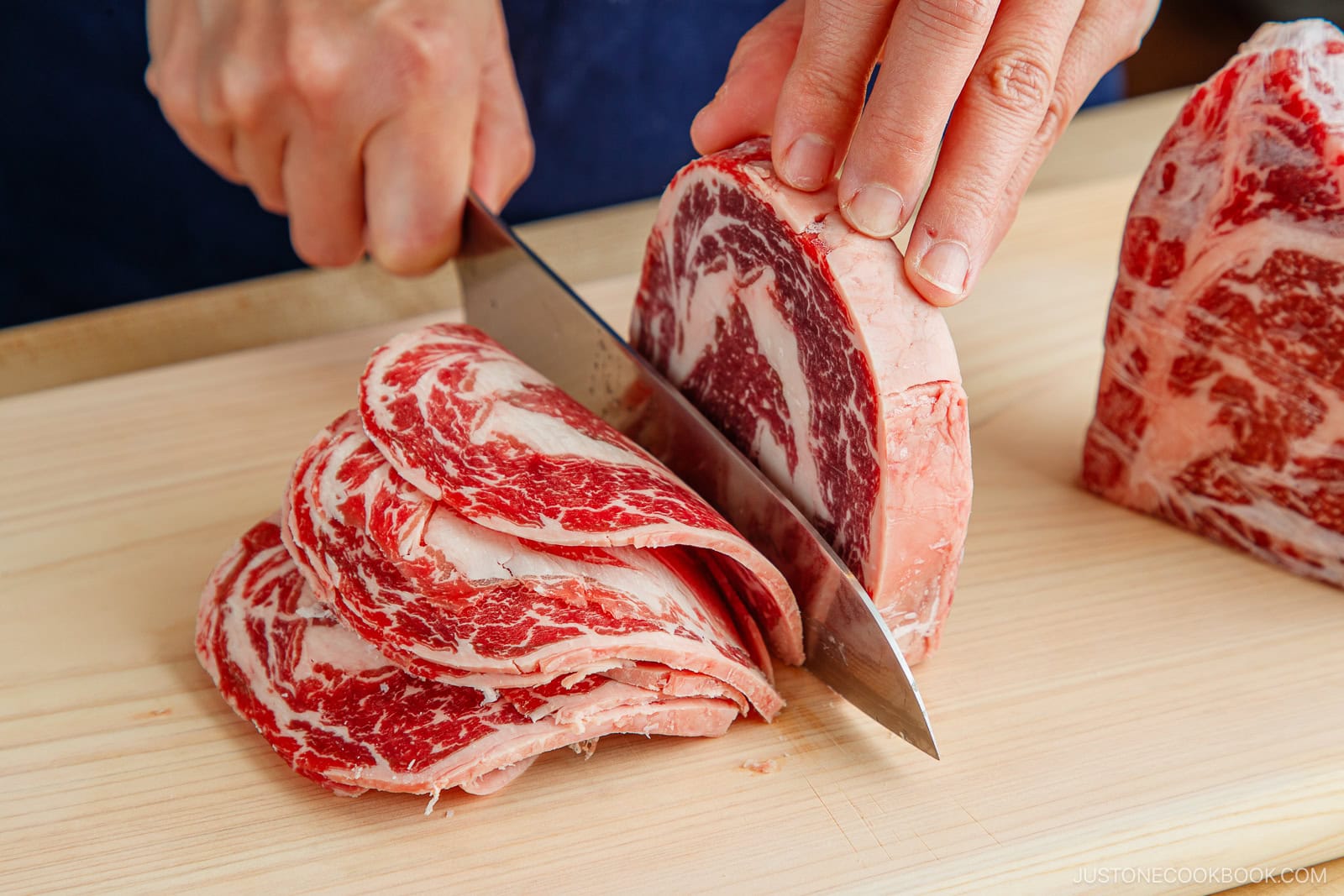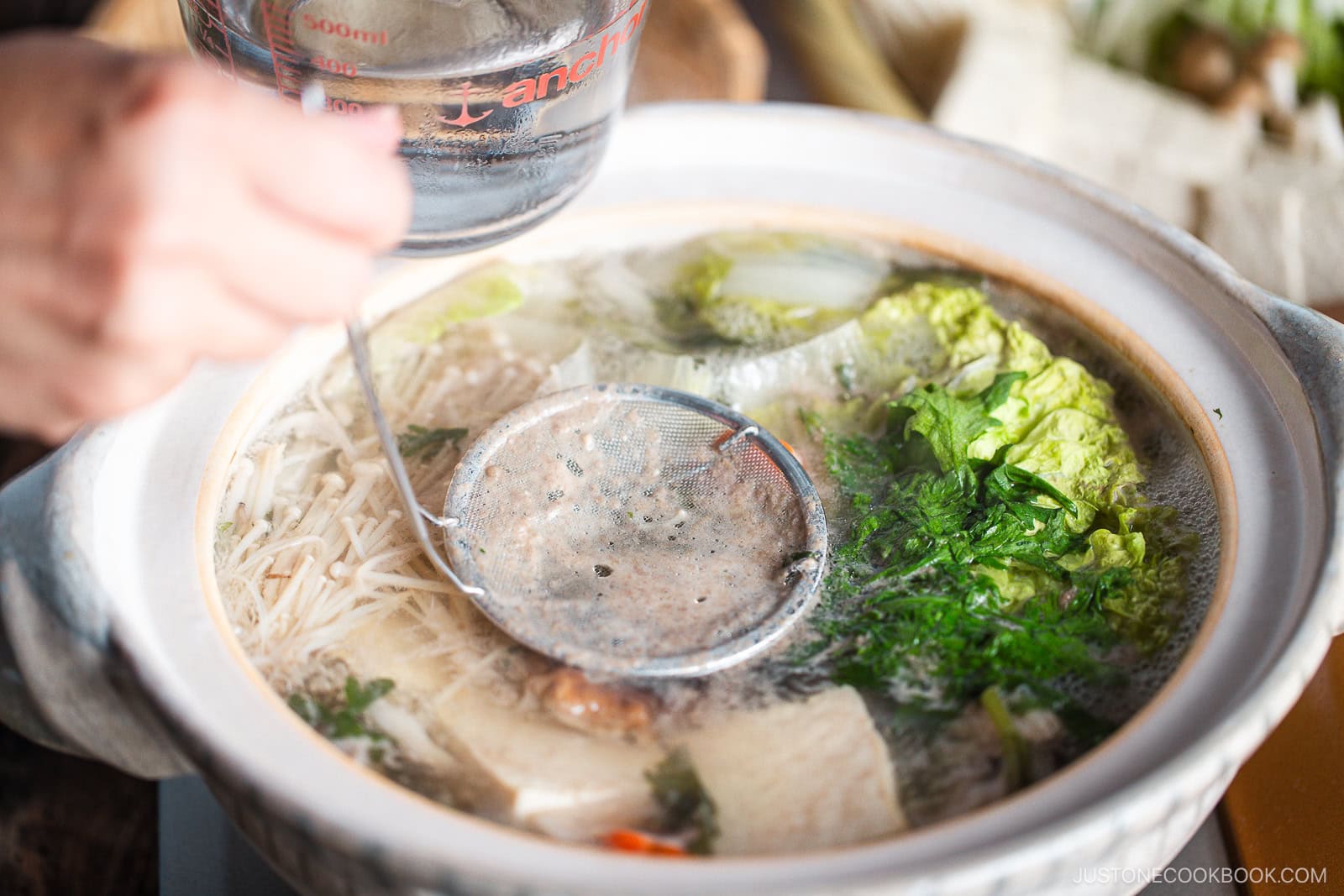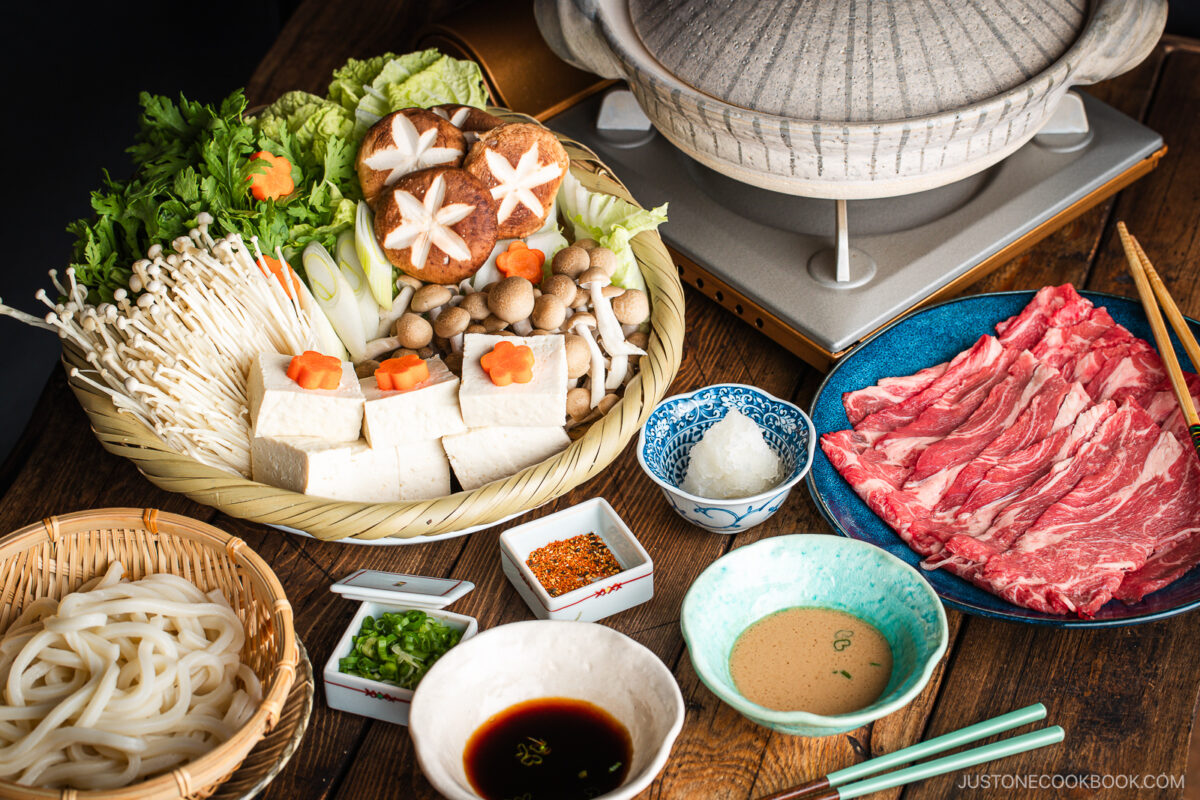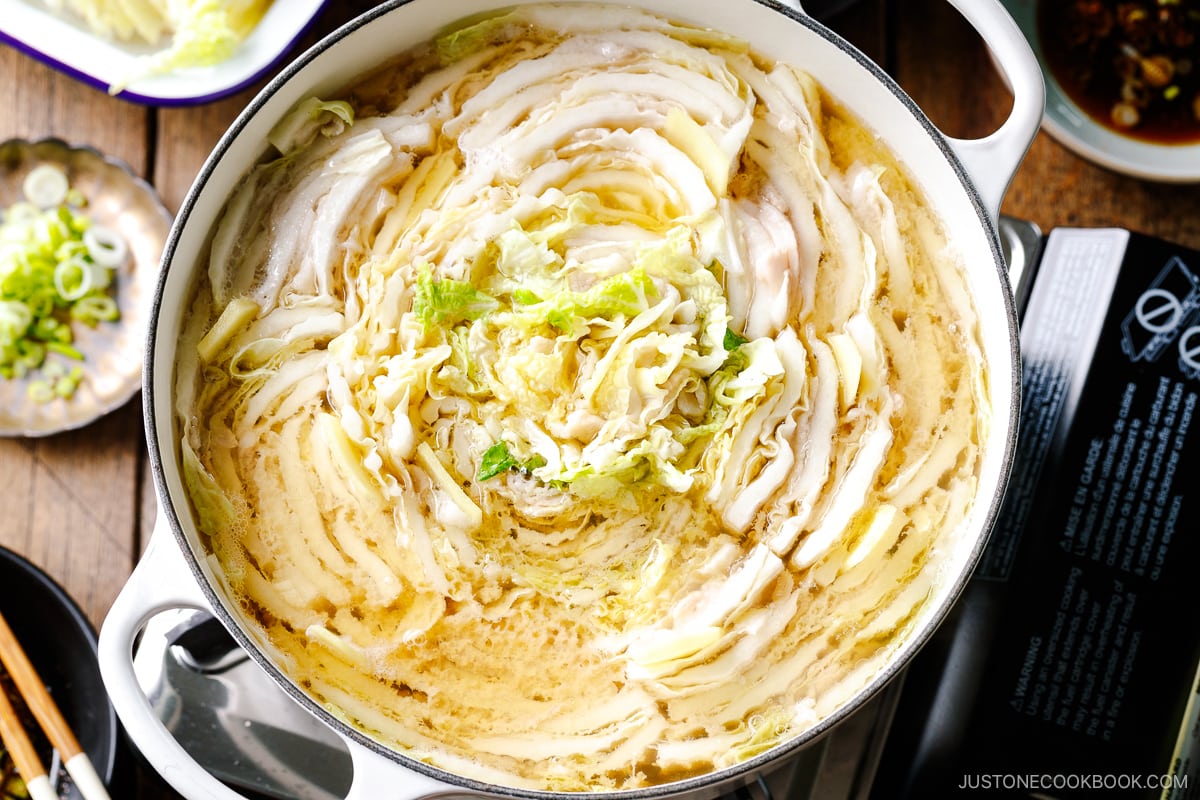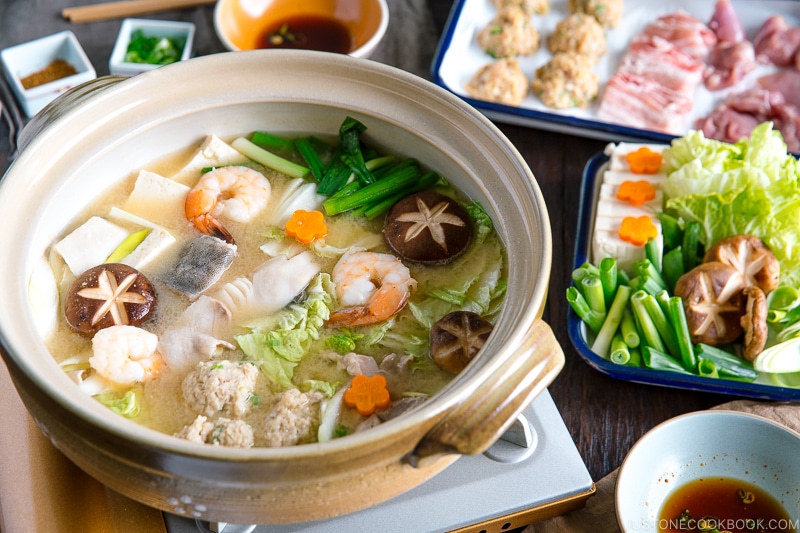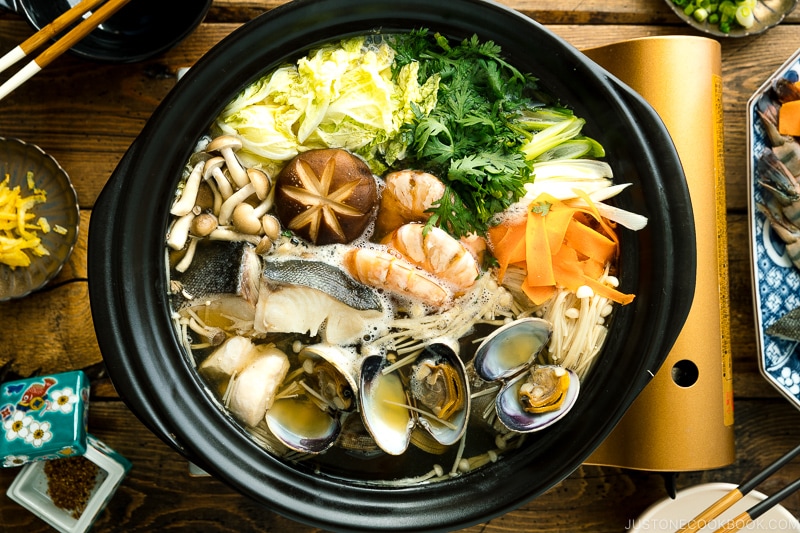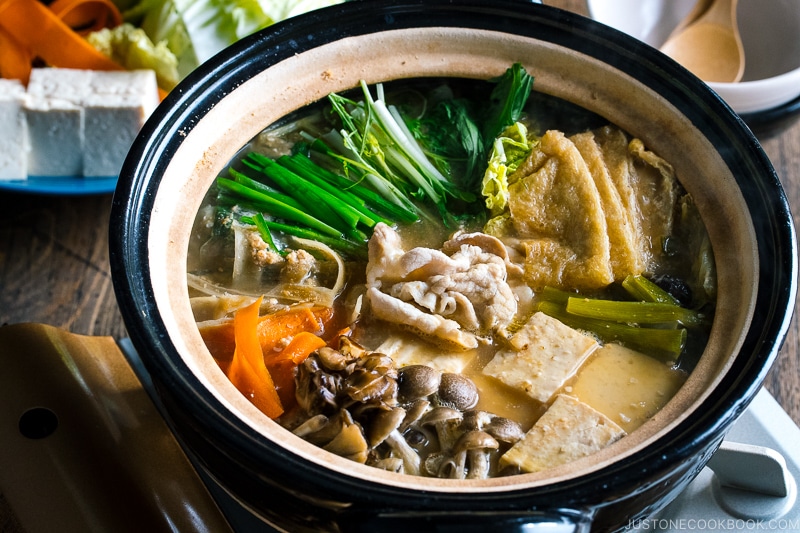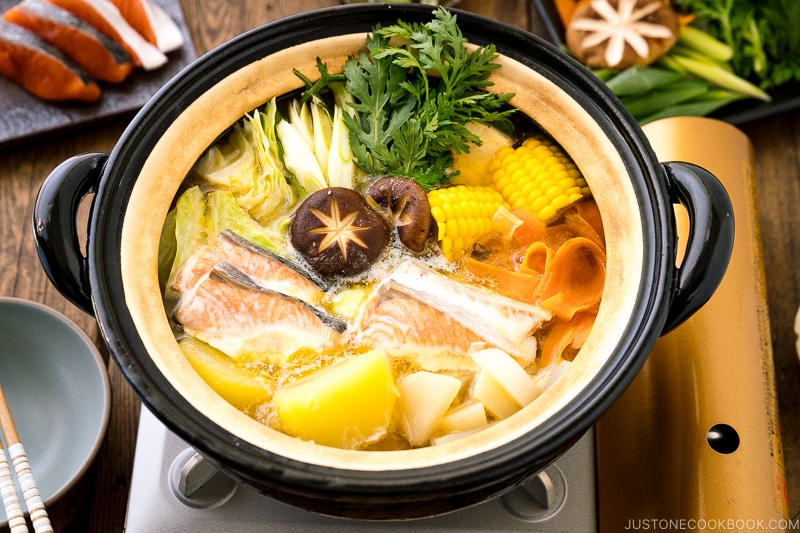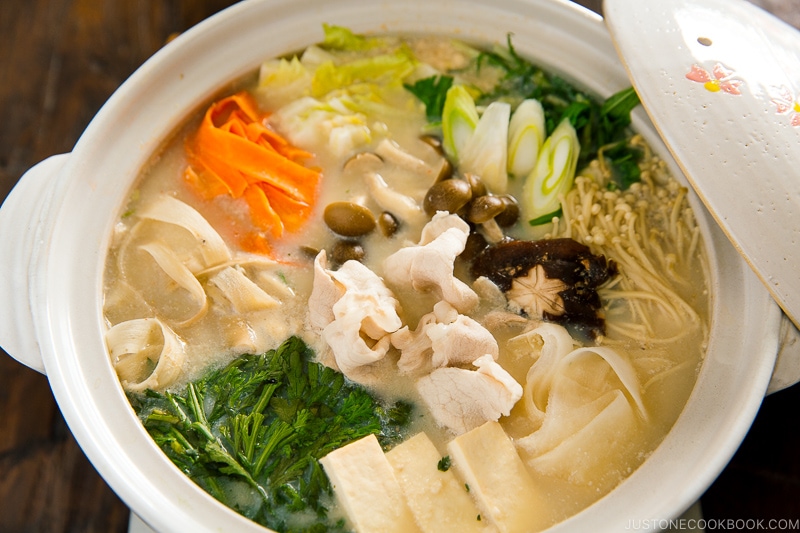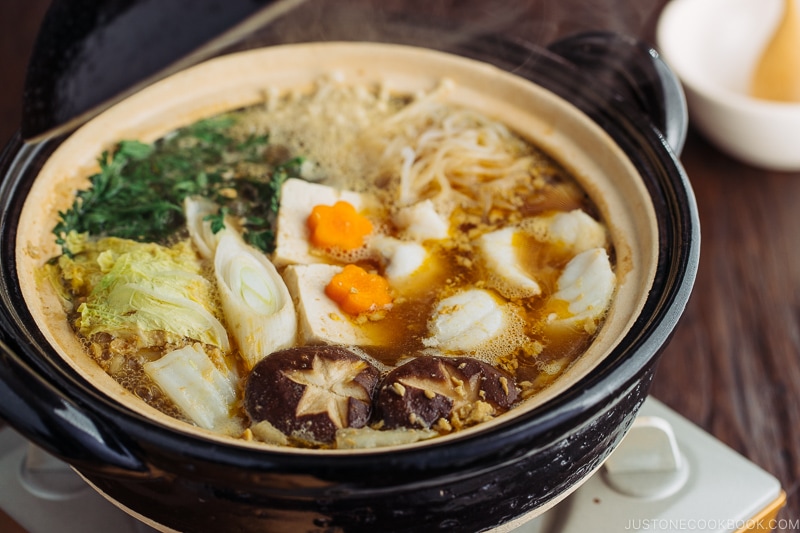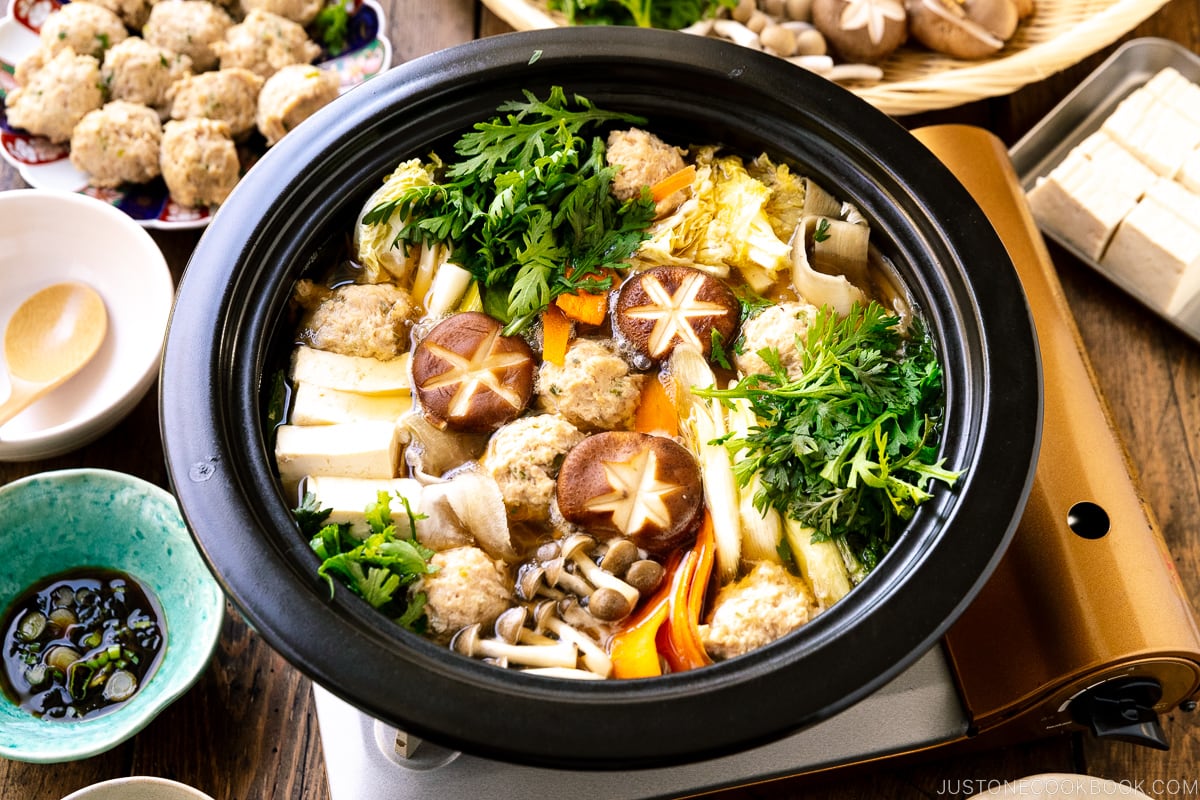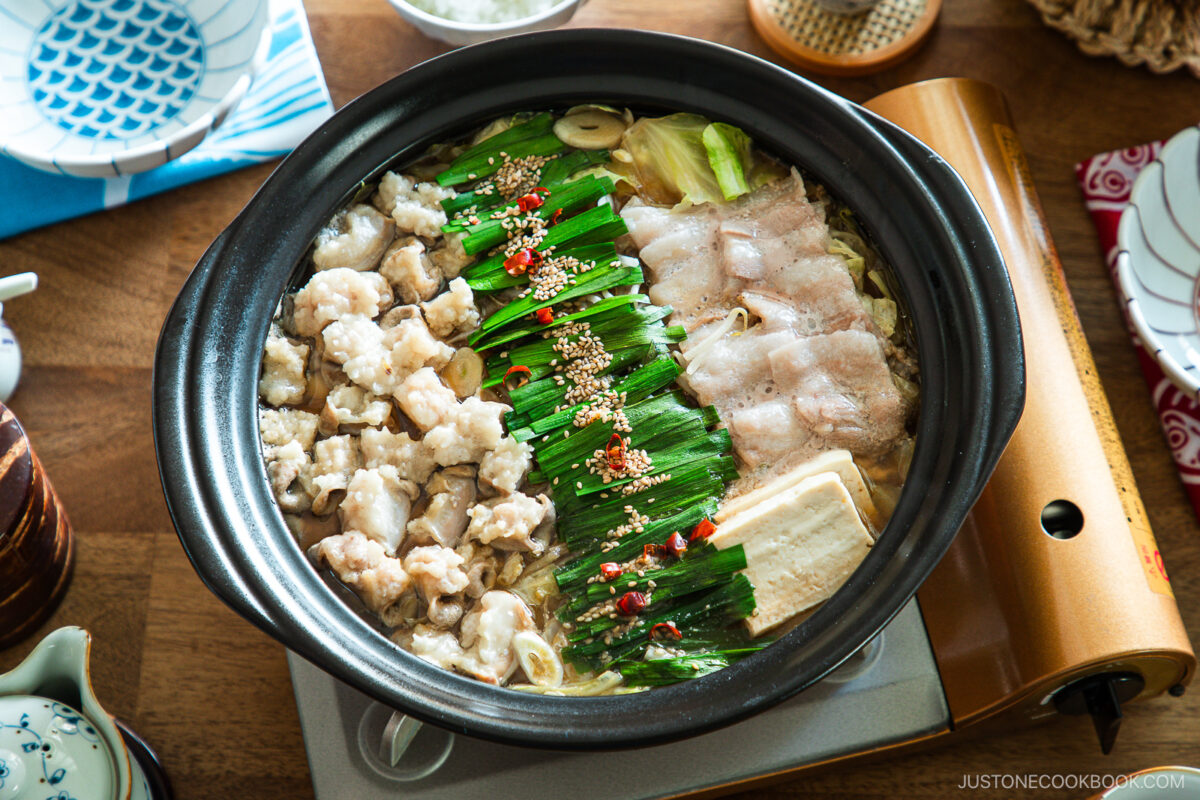Ready to enjoy one of Japan’s coziest meals? Nabemono, or nabe, are Japanese hot pot dishes cooked right at the table. In this guide, I’ll walk you through the basics so you can make a warm, comforting Japanese hot pot at home anytime.
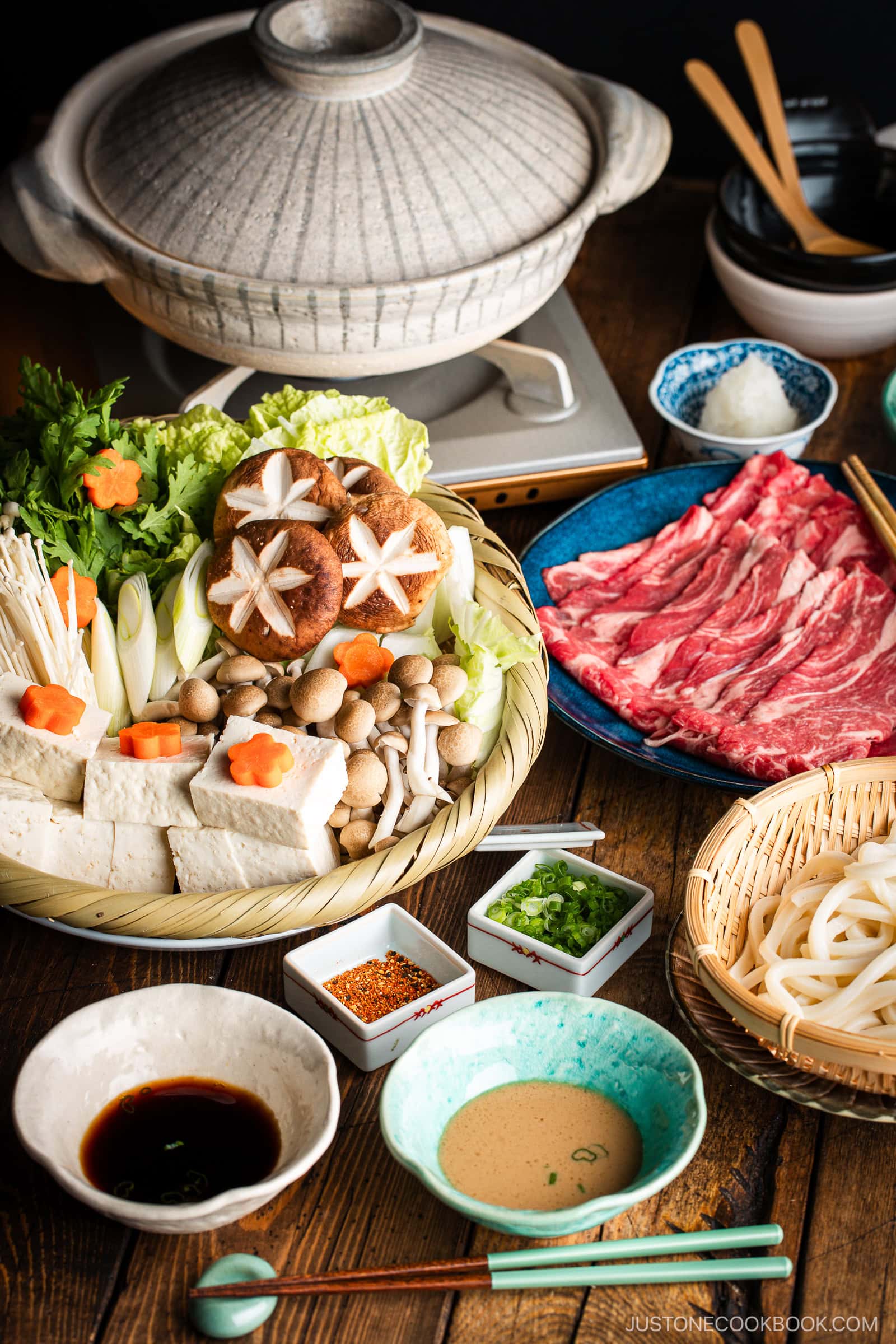
Quick Overview
When the weather turns cold or rainy, many Japanese families turn to nabe (鍋). A pot of simmering broth, fresh ingredients, and everyone cooking together at the table—this is the heart of a Japanese hot pot meal.
Why you’ll love nabe:
- A cozy, shareable meal that brings everyone together
- Easy to customize with your favorite proteins and vegetables
- Comforting broths that warm you from the inside out
In this guide, you’ll learn what nabe is, the essential equipment, key ingredients, and the most popular Japanese hot pot recipes to try.
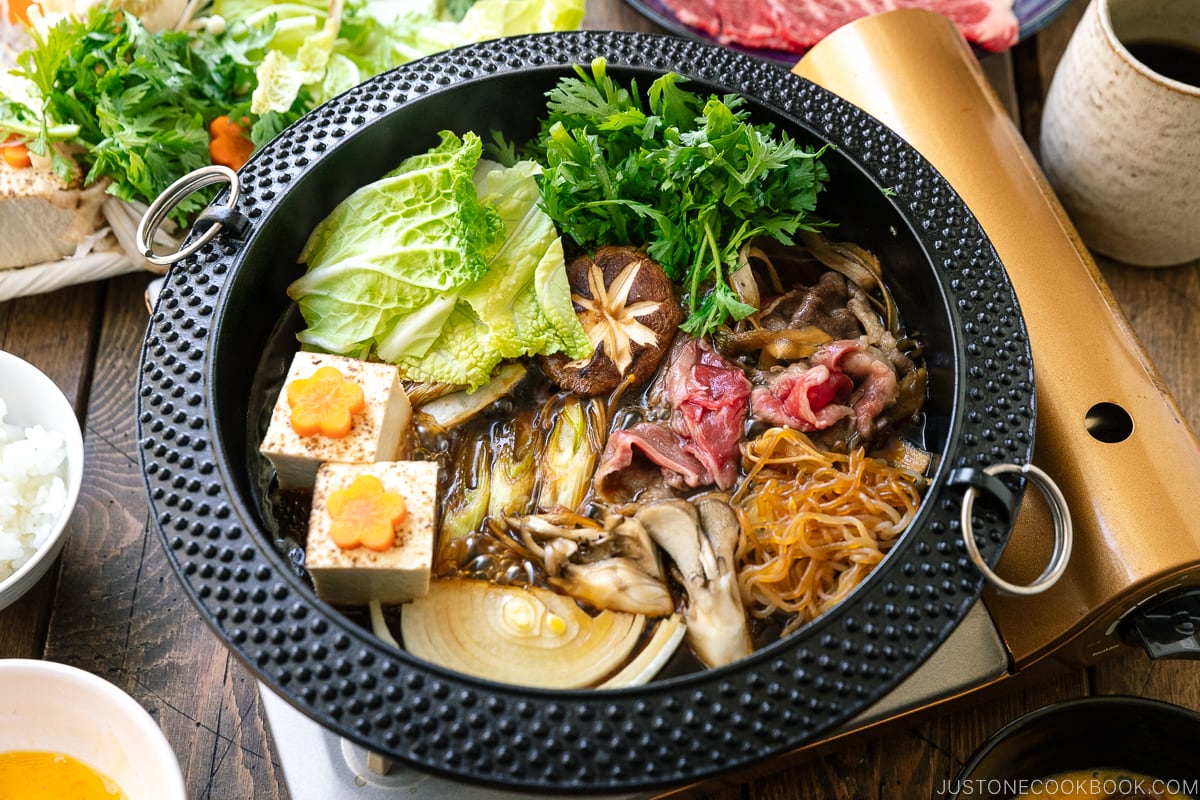
What is Nabemono (or Nabe)?
Nabemono is the Japanese term for hot pot dishes cooked and enjoyed at the table.
- Nabe (鍋) means “pot.”
- Nabemono (鍋物) means “ingredients cooked together in a pot.”
The meal is simple and communal. Everyone adds ingredients to a simmering broth, waits for it to cook, and enjoys it piping hot. It’s interactive, cozy, and very homey.
While nabe is a classic winter meal, it’s also perfect for casual gatherings, holidays, and family dinners. If you love warm one-pot meals, you’ll enjoy nabe all year long.
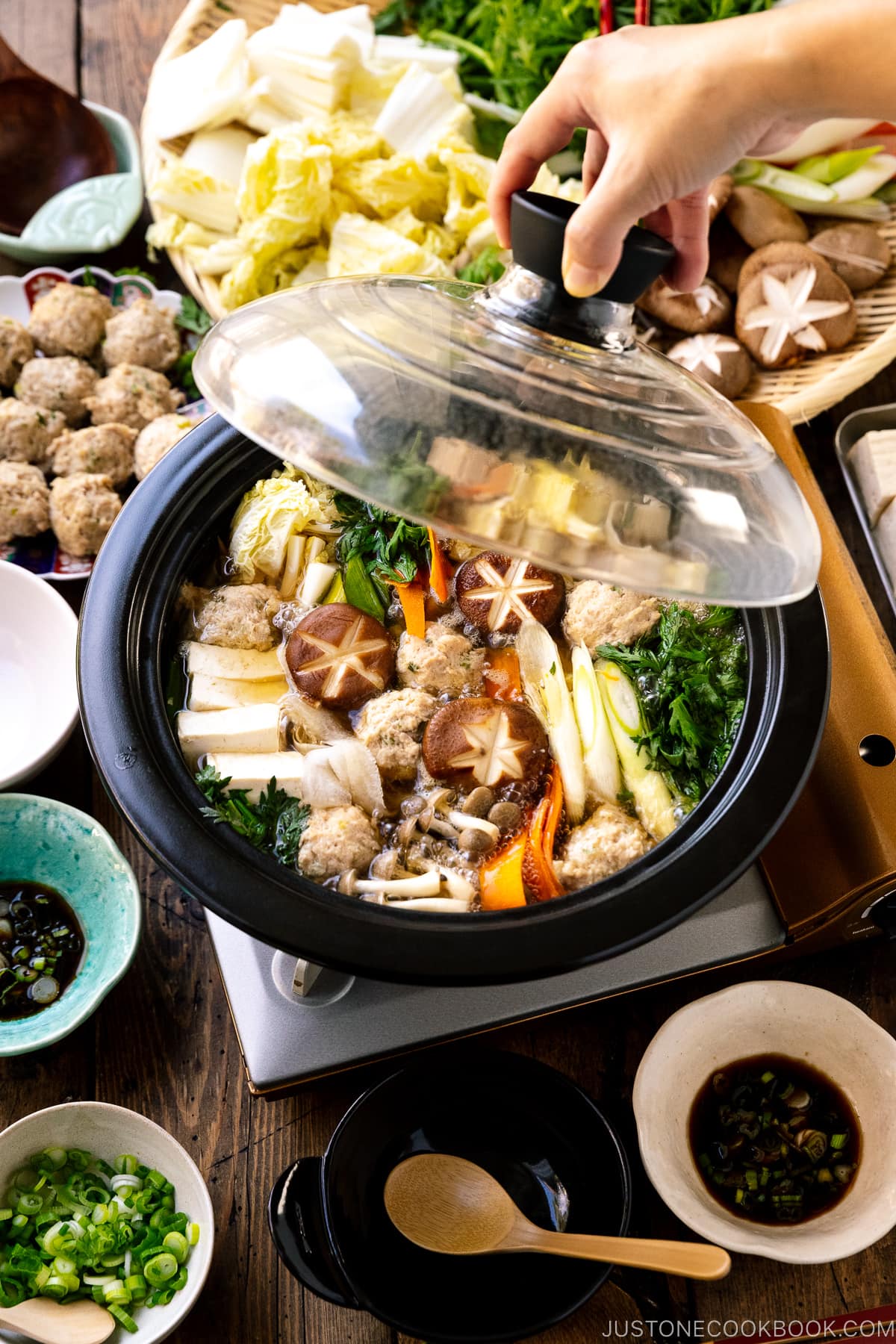
Essential Nabe Equipment
You only need a few simple tools to make Japanese hot pot at home. These keep the broth hot at the table and make the meal easy and fun.
Quick list
- Donabe pot (or another sturdy pot)
- Portable butane stove (or induction cooktop)
- Butane canisters
- Serving utensils – skimmer, ladles, slotted ladles, cooking chopsticks
- Tableware – medium bowl, small bowl, and chopsticks
1. Donabe pot
The donabe (土鍋) is the most traditional pot for Japanese hot pot. It holds and distributes heat well, which is perfect for simmering hot pot at the table. Donabe pots come in many sizes and designs, so if you cook nabe often, investing in a good-quality donabe is well worth it.
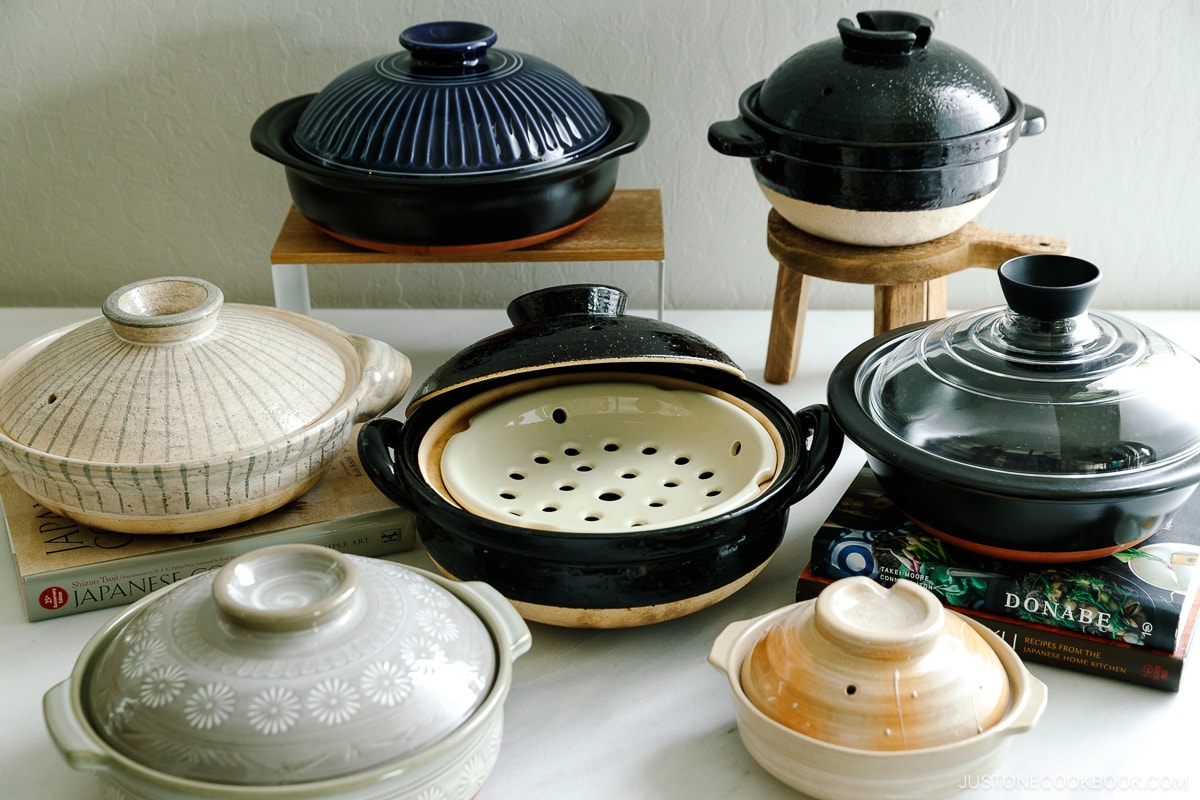
Where to Buy
Start with JOC Goods, where we carefully curate donabe directly from trusted Japanese kilns. You can also find them at Japanese or Asian grocery stores, specialty ceramic shops, and on Amazon, though the quality can vary.
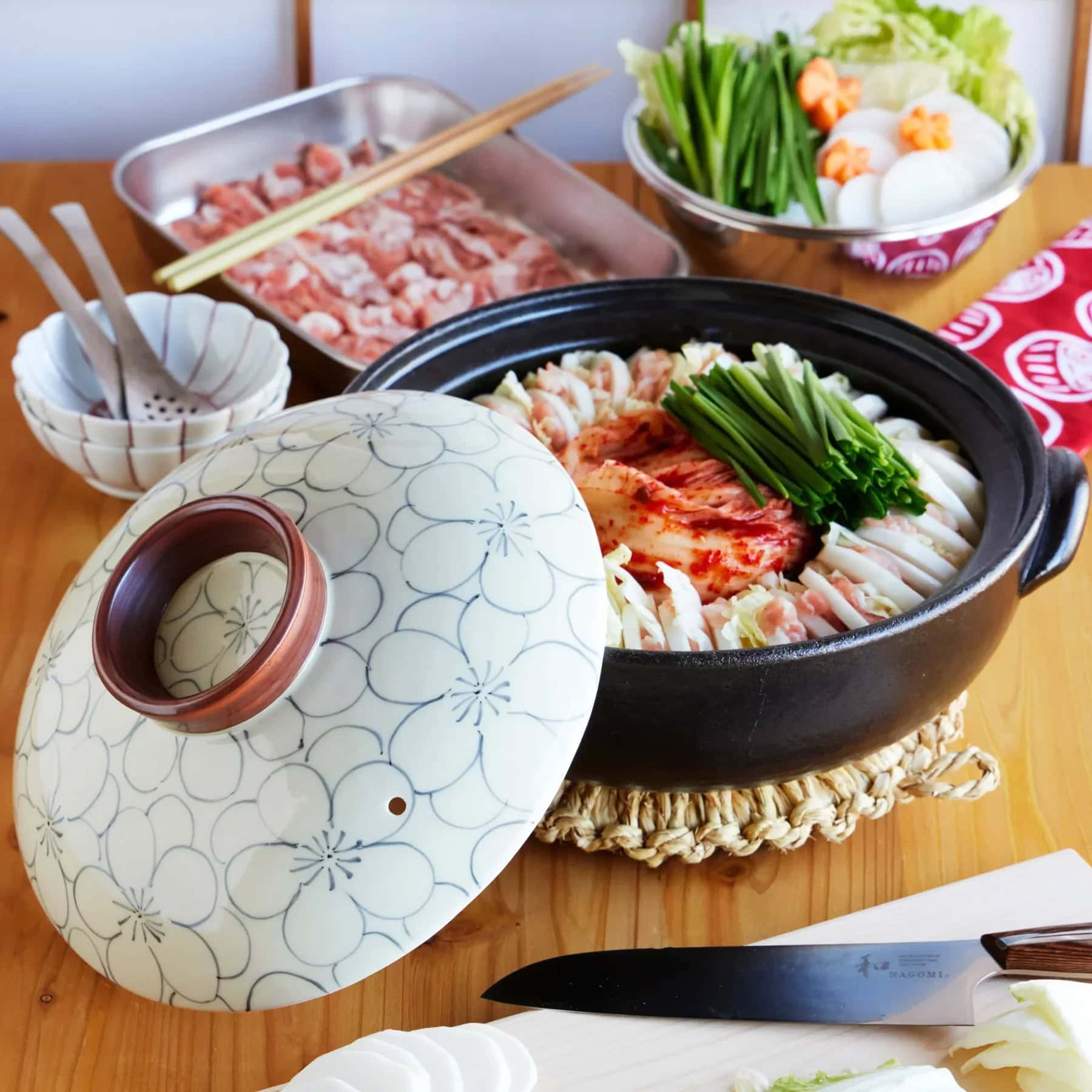
Donabe Size Guide
Donabe sizes are measured by the diameter of the pot. For large groups (6 people or more), using two donabe pots works best.
- Small (6.5–8 in / 16.5–20 cm, 6号) – Serves 1–2
- Medium (8.5–11 in / 22–28 cm, 7号〜9号) – Serves 2–3
- Large (12 in / 31 cm, 10号) – Serves 4–6
⚠️ Before your first use, season your donabe properly so it will last for years. Follow my step-by-step guide in How to Season and Care for Your Donabe.
Alternative Pots
No donabe? You can still enjoy nabe with these options:
- Dutch oven: Heavy and sturdy; best with a low, wide shape like this braiser.
- stainless steel pot with divider: Great for cooking two broths—spicy and mild.
- multi-functional electric skillet: Ideal for small kitchens or dorms; you can sauté, grill, and simmer in one appliance.
- electric stainless steel pot with divider: Works well when you prefer not to use gas.
2. Portable butane stove
A portable butane stove keeps the broth hot at the table—the traditional way to enjoy nabe!
📌 Most donabe pots need a gas flame and cannot be used on standard electric or induction cooktops unless specifically noted.

Many families use a single-burner butane stove for tabletop cooking, grilling, and hot pot. It’s also very useful for emergencies, camping, or road trips.
Portable Stove Options
We’ve used several Iwatani stoves over the years, and they’re reliable:
- 15,000 BTU model – Strong heat, similar to a home gas burner.
- 12,000 BTU low-profile model – Fits larger donabe without hitting the canister cover.
I’ve also listed a few additional Iwatani options for you.
Alternative option: If you are using a stainless steel pot, you can also use a portable induction cooktop.
3. Butane canisters
You’ll need butane canisters (カセットガス) for your portable stove.
⚠️ Safety Tip: Always cook in a well-ventilated space. (Butane burners typically don’t produce carbon monoxide.)
Expert Tip: Keep extra canisters on hand in winter. Cold temperatures weaken the flame, and hot pot meals often last a long time. Extra fuel makes sure your nabe stays hot until the end.
4. Serving utensils
Set out a few shared utensils so everyone can cook and serve with ease:
- fine mesh skimmer
- ladles
- slotted ladles
- 3-piece nabe tool set
- long cooking chopsticks
- tongs
- prep trays for ingredients
A matching nabe tool set with beautiful wooden handles looks tidy on the table and makes serving so much easier!

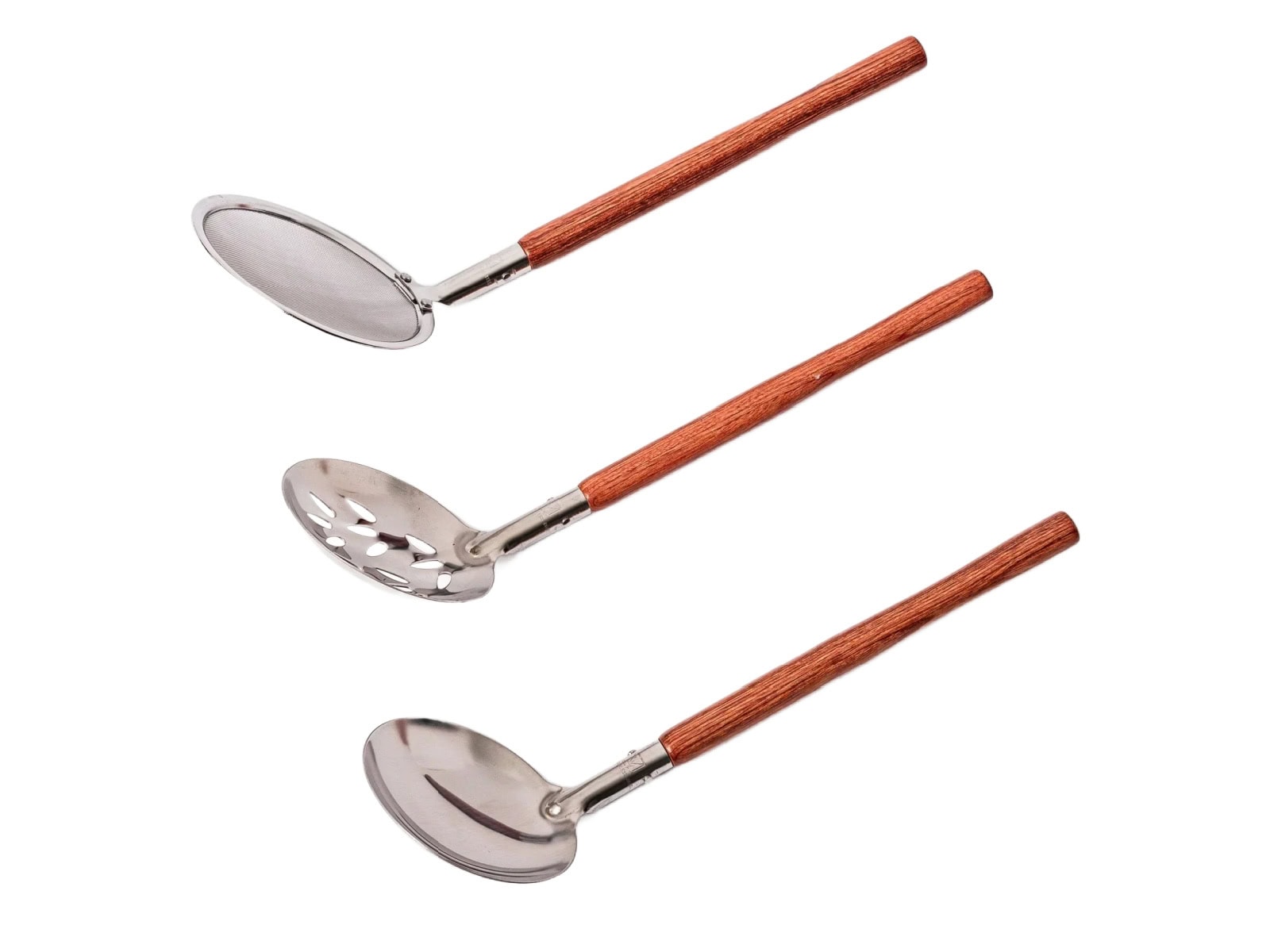
5. Tableware and drinkware
Give each guest a small personal setup:
- medium bowl for holding cooked ingredients and broth.
- small dipping bowl for ponzu, sesame sauce, or any dipping sauce.
- chopsticks and chopstick rest
- drinkware
You might also want:
- serving platters for arranging veggies, meat, mushrooms, and tofu.
- condiment bowls for green onions, grated daikon, shichimi togarashi, and yuzu kosho.

Japanese Hot Pot Ingredients
A delicious nabe starts with a good dashi (Japanese soup broth), then layers in vegetables, protein (sometimes protein, then vegetables), and a simple finish of rice or noodles.
Quick list
- Dashi (Japanese soup stock)
- Meat and seafood
- Tofu and soybean products
- Vegetables and mushrooms
- Rice or noodles
- Dipping sauce
1. Dashi (Japanese soup stock)
The common broths for Japanese hot pot include:
- Kombu dashi – Made from dried kelp; light and clean.
- Katsuo (bonito) dashi – Made from dried bonito flakes; richer and more savory.
- Awase dashi – A blend of kombu and bonito; the most classic all-purpose.
- Iriko (anchovy) dashi – Made from dried anchovies; deep and bold.
- Vegan dashi – Made with kombu and/or dried shiitake mushrooms.

2. Meat and seafood
- Thinly sliced beef or pork (about 1–2 mm thick) cooks in seconds in hot broth and adds a lovely richness. Well-marbled cuts like ribeye, sirloin, pork belly, or pork loin give a soft, silky texture and a naturally sweet flavor. Because the meat is rich and tender, a few slices go a long way.
- Chicken thigh stays juicy and tsukune (chicken meatballs) add body and richness.
- White fish or salmon hold their shape and add a clean, delicate taste.
- Shrimp, scallops, and clams cook quickly and bring deep umami.
- Squid or crab add great texture and natural sweetness; great for winter hot pots.
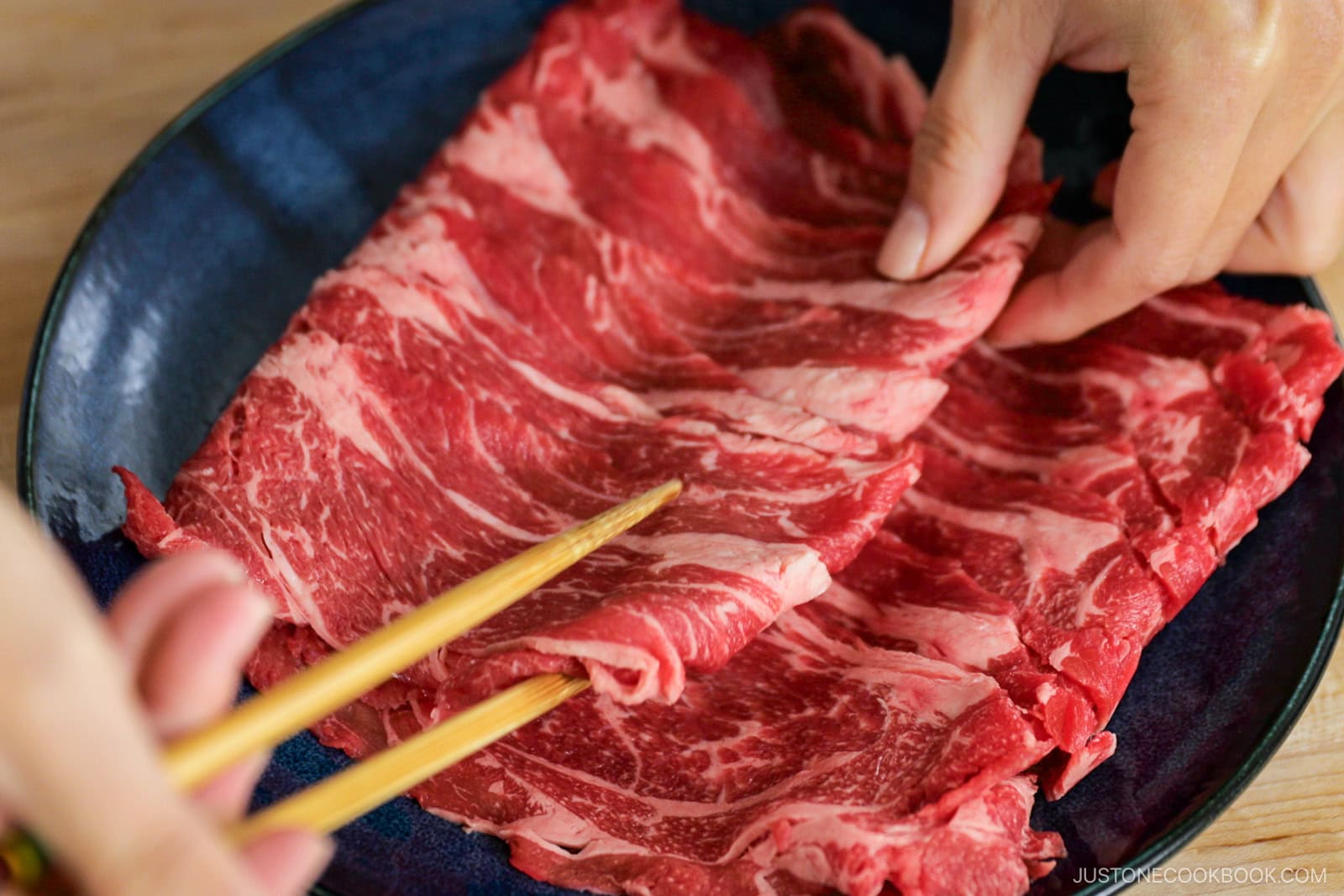
3. Tofu and soybean products
Tofu is a nabe staple and soaks up the flavorful broth beautifully. Here are some options:
- soft tofu – Very smooth and delicate.
- medium-firm tofu – Holds its shape well in hot broth.
- yaki tofu (grilled tofu) – Firmer texture with a light grilled flavor.
- aburaage (deep-fried tofu pouch) – Soft and spongy; great for absorbing broth.
- atsuage – Thick fried tofu with a crisp outside and soft inside.
- yuba (tofu skin) – Thin, delicate layers with a silky texture.
- ganmodoki – Tofu fritters mixed with vegetables.
- kinchaku – Aburaage pouches filled with mochi (plain rice cake).
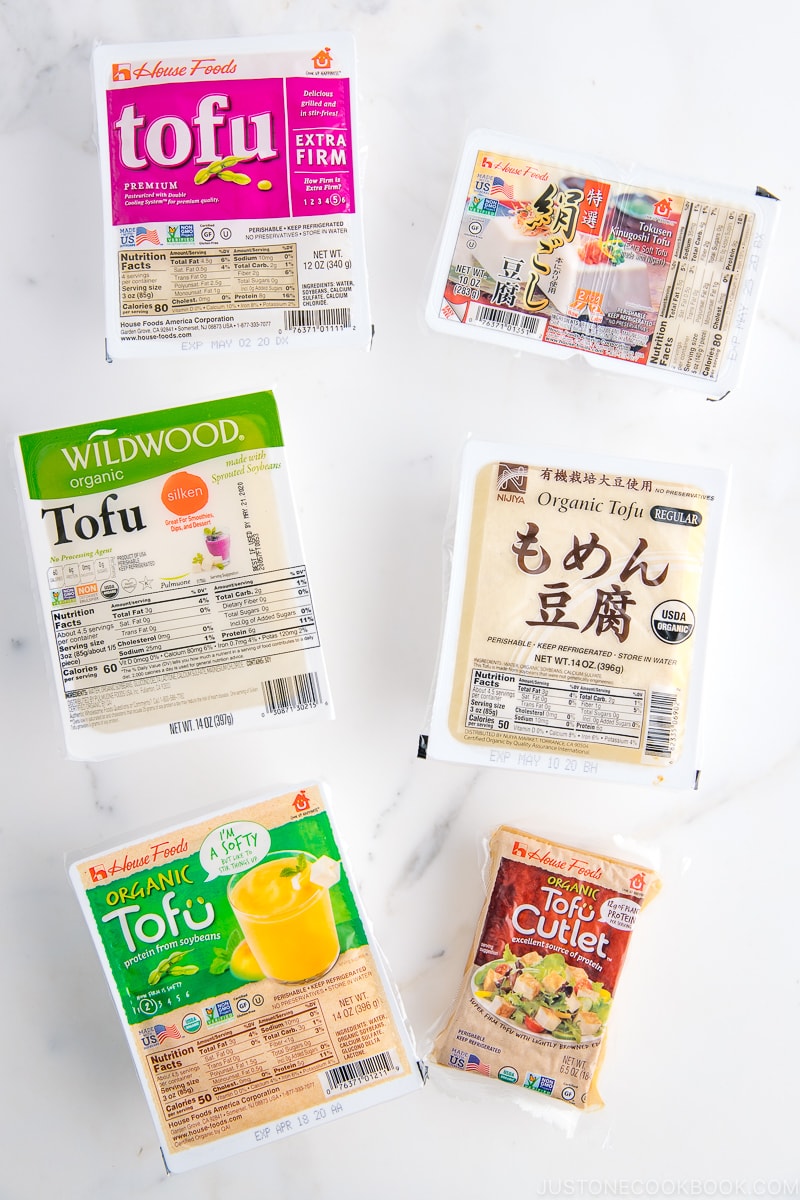

4. Vegetables and mushrooms
Classic vegetables for nabe include:
- napa cabbage
- carrot
- daikon
- Tokyo negi (Japanese long green onion)
- chrysanthemum greens (shungiku)
- gobo (burdock root)
- mizuna
They add sweetness, texture, and lots of color to the pot.
You can also use what’s available locally, such as bok choy, broccoli, spinach, watercress, zucchini, and more. Add firm stems first to the broth, then leafy greens.
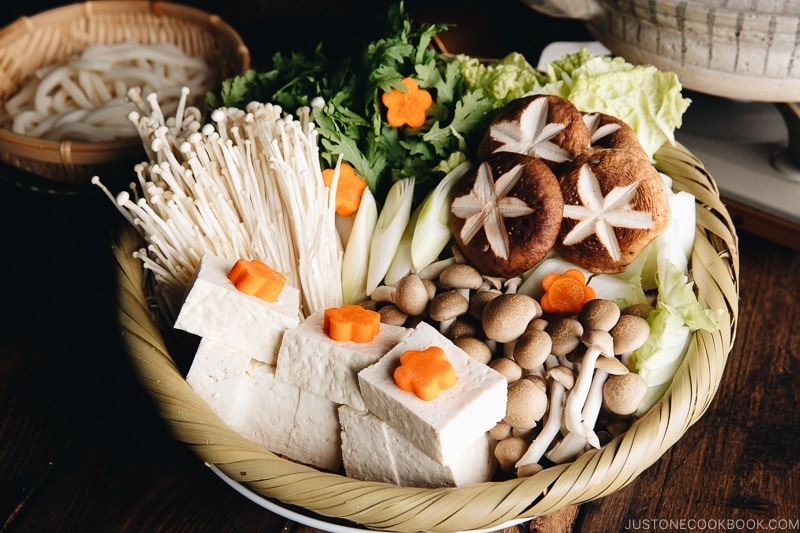
Japanese mushrooms are another must-have. They add deep umami and a wonderful texture to the broth. My favorites are:
- shiitake mushrooms
- enoki mushrooms
- shimeji mushrooms
- maitake mushrooms
- king oyster mushrooms
Each brings its own flavor and shape to the pot.
5. Dipping sauce
The broth is delicious on its own, but dipping sauces make nabe extra fun. Here are the two most common sauces:
- Ponzu – A citrusy soy sauce that brightens the dish, especially fatty meat.
- Goma dare – A creamy roasted sesame sauce that pairs well with marbled beef and pork.
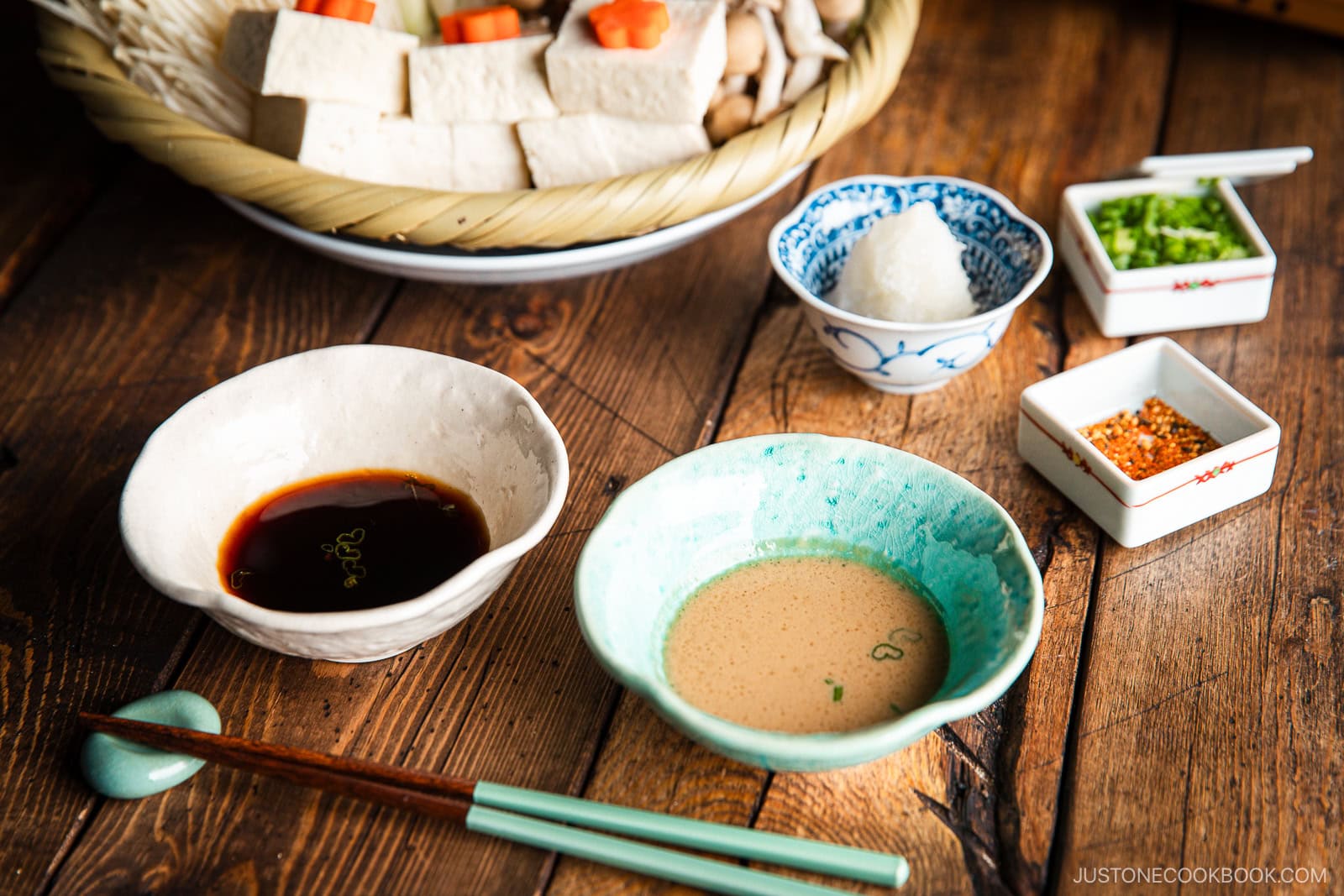
You can customize your bowl with toppings like:
- grated daikon
- green onions
- yuzu kosho
- chili oil
- toasted sesame seeds
Have fun creating your own perfect mix!
6. Rice or noodles
Finish the meal with shime, the final course.
- Add cooked rice to the remaining broth and simmer for Zosui (rice soup).
- Or add cooked udon noodles and simmer until tender.
It’s the perfect way to enjoy every last drop of the flavorful broth.
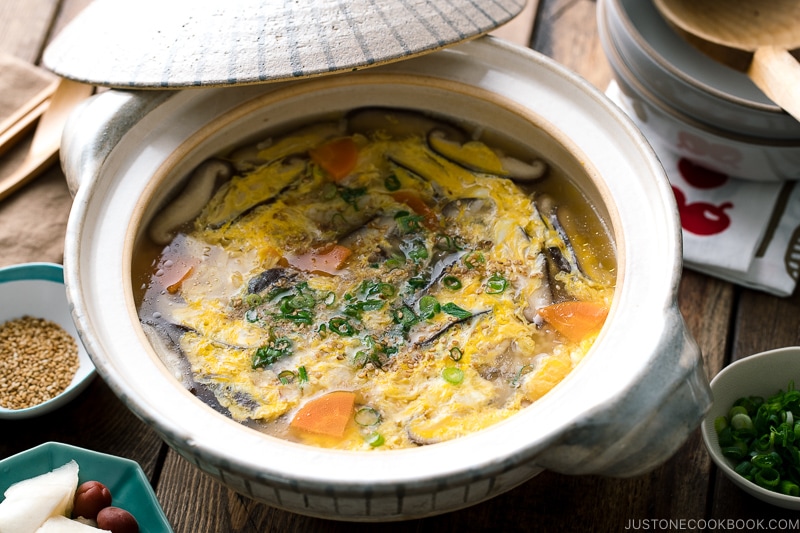
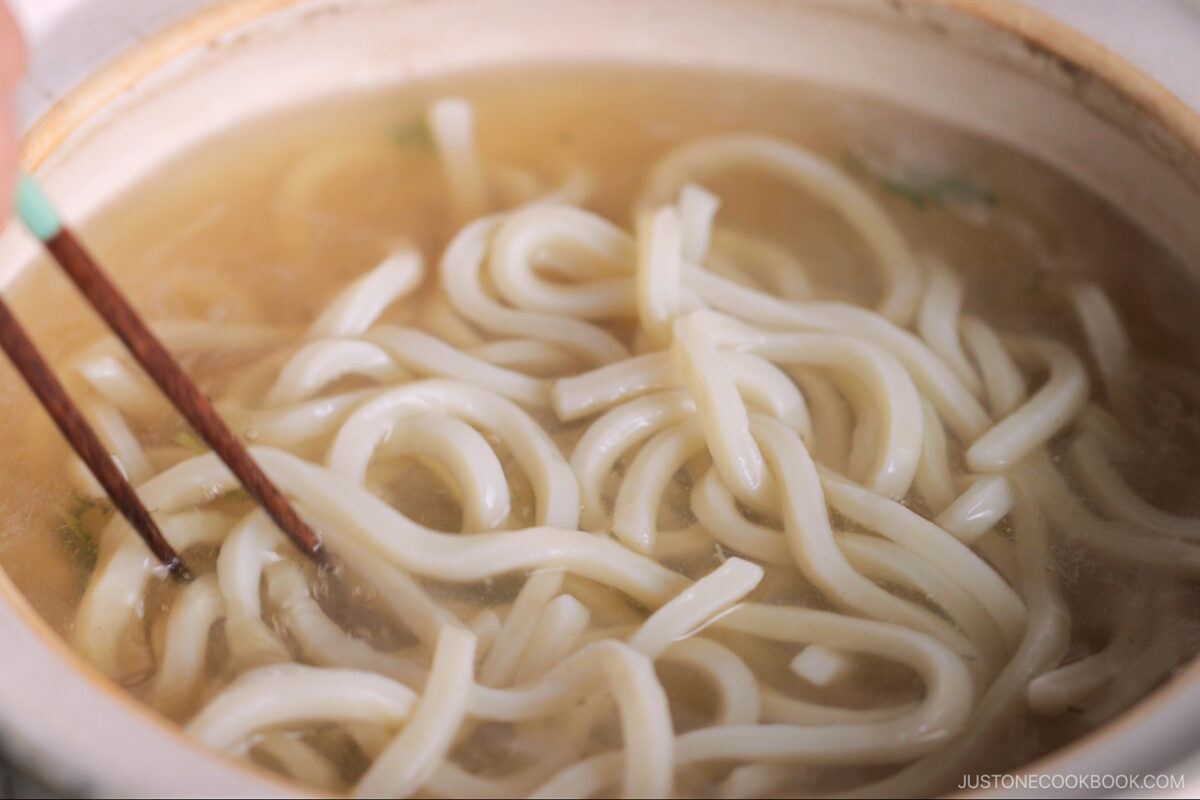
Popular Nabe Recipes
Here are some of my most loved Japanese hot pot recipes so you can pick one to start with!
Shabu Shabu
Sukiyaki
Mille-Feuille Nabe
Chanko Nabe (Sumo Stew)
Yosenabe (Japanese Hot Pot)
Sesame Miso Hot Pot (Goma Miso Nabe)
Hokkaido Salmon Hot Pot (Ishikari Nabe)
Soy Milk Hot Pot
Mizutaki (Japanese Chicken Hot Pot)
Monkfish Hot Pot (Anko Nabe)
Tsukune Hot Pot (Tori Dango Nabe)
Mizore Nabe (Hot Pot with Grated Daikon)
Motsunabe Recipe
Editor’s Note: This post was originally published on March 5, 2019. It was updated on November 24, 2021, and republished on November 26, 2025 with more helpful information.



